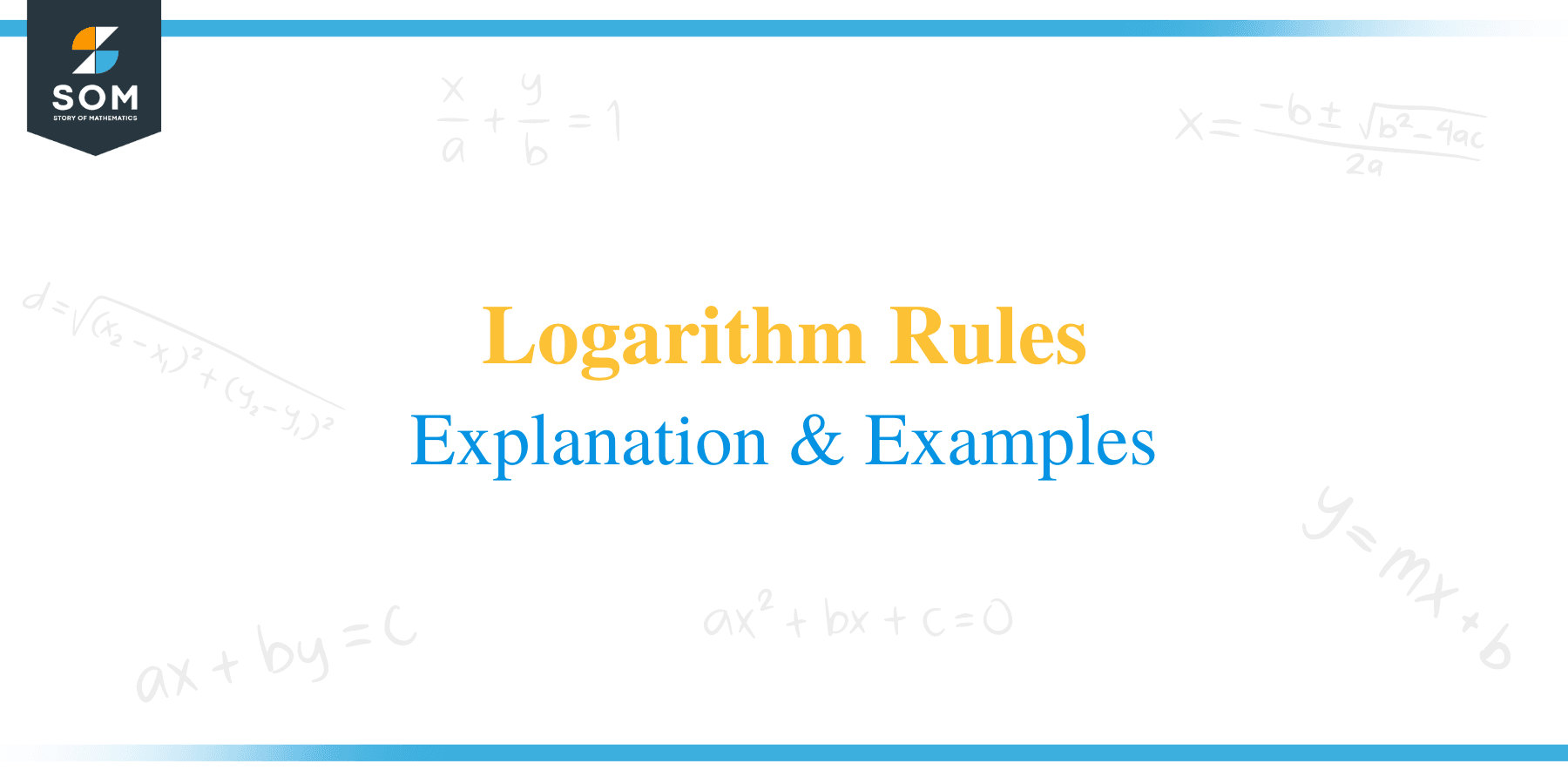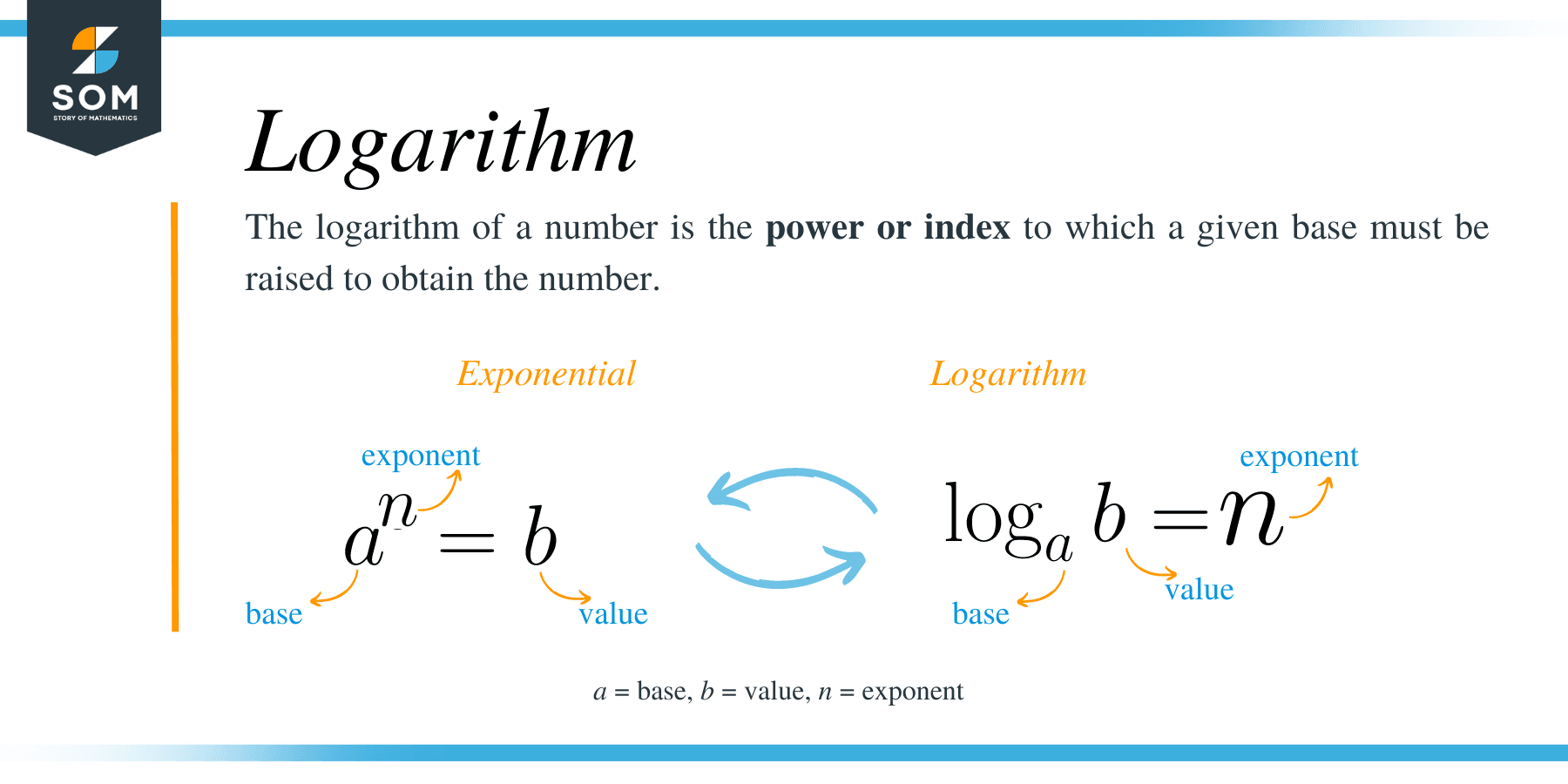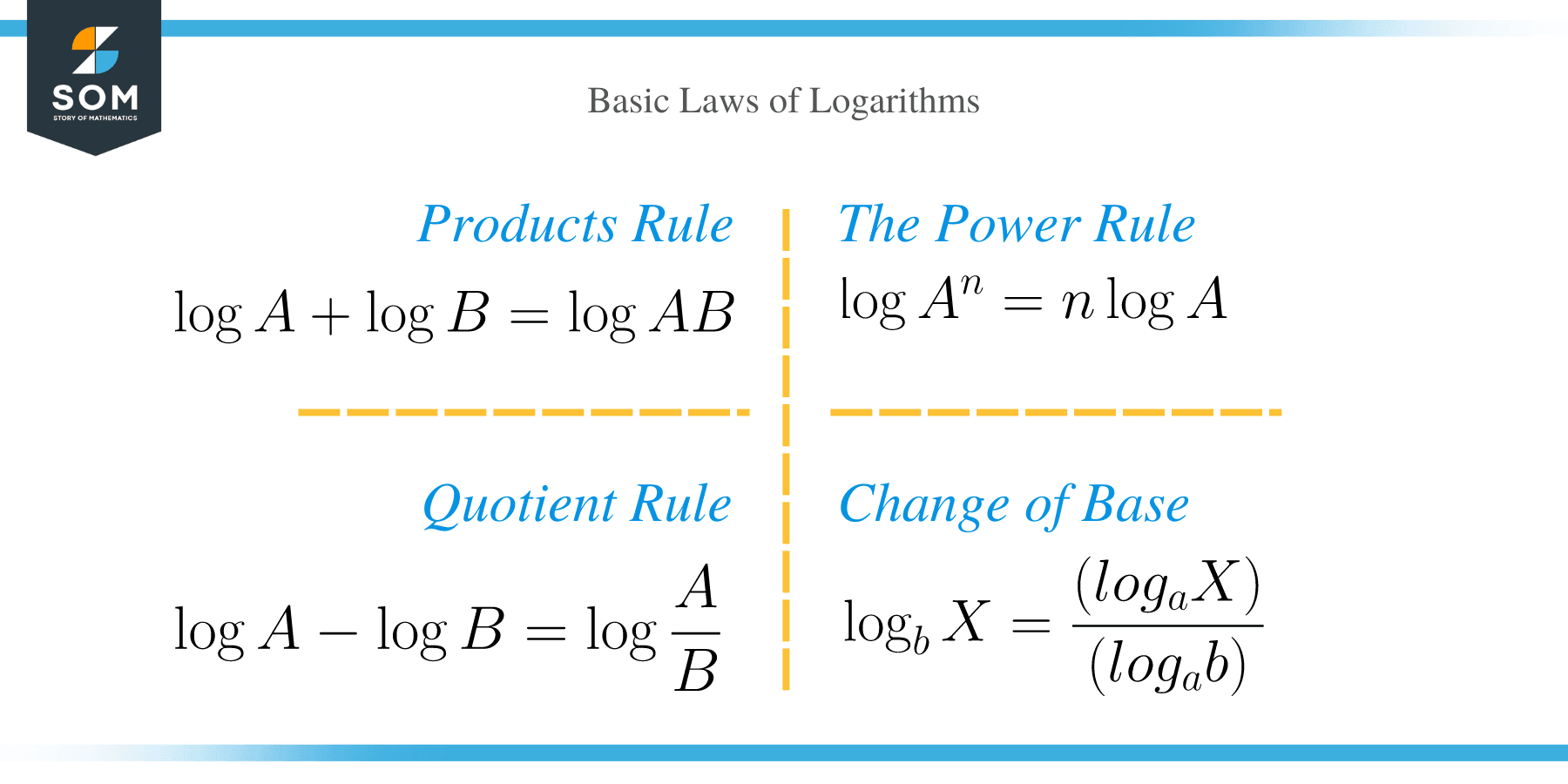- Home
- >
- Logarithm Rules – Explanation & Examples
Logarithm Rules – Explanation & Examples
 What is a logarithm? Why do we study them? And what are their rules and laws?
What is a logarithm? Why do we study them? And what are their rules and laws?
To start with, the logarithm of a number ‘b’ can be defined as the power or exponent to which another number ‘a’ must be raised to produce the result equal to the number b.
We can represent this statement symbolically as;
log a b = n.
Similarly, we can define the logarithm of a number as the inverse of its exponents. For instance, log a b = n can be represented exponentially as; a n = b.
Therefore, we can conclude that;
an = b ⇔ log a b = n.
Although logarithms are taught in schools to simplify computation involving large numbers, they still have a significant role in our daily lives.
Let’s see some of these applications of logarithms:
- We use logarithms to measure the acidity and alkalinity of chemical solutions.
- Measurement of earthquake intensity is performed on the Richter scale using logarithms.
- The level of noise is measured in dB (decibels) on a logarithmic scale.
- Exponential processes such as the decay of ratio active isotopes, growth of bacteria, the spread of an epidemic in a population, and cooling of a dead body are analyzed using logarithms.
- A logarithm is used to calculate the payment period of a loan.
- In calculus, the logarithm is used to differentiate complex problems and determine the area under curves.
Like exponents, logarithms have rules and laws that work the same way as the rules of exponents. It is important to note that the laws and rules of logarithms apply to logarithms of any base. However, the same base must be used throughout a calculation.
We can use laws and rules of logarithms to perform the following operations:
- Changing logarithmic functions to exponential form.
- Addition
- Subtraction
- Multiplication
- Division
- Expanding and condensing
- Solving logarithmic equations.
Laws of logarithms
The logarithmic expressions can be written in different ways but under certain laws called laws of logarithms. These laws can be applied on any base, but during a calculation, the same base is used.
The four basic laws of logarithms include:
The Product Rule Law
The first law of logarithms state that the sum of two logarithms is equal to the product of the logarithms. The first law is represented as;
⟹ log A + log B = log AB
Example:
- log 2 5 + log 2 4 = log 2 (5 × 4) = log 2 20
- log 10 6 + log 10 3 = log 10 (6 x 3) = log 10 18
- log x + log y = log (x * y) = log xy
- log 4x + log x = log (4x * x) = log 4x2
The Quotient Rule Law
Subtraction of two logarithms A and B is equal to dividing the logarithms.
⟹ log A − log B = log (A/B)
Example:
- log 10 6 – log 10 3 = log 10 (6/3) = log 10 2
- log 2 4x – log 2 x = log 2 (4x/x) = log 2 4
The Power Rule Law
⟹ log A n = n log A
Example:
- log 10 53 = 3 log 10 5
- 2 log x = log x2
- log(4x)3 = 3 log (4x)
- 5 ln x2 = ln x (2 *5) = ln x10
Change of Base Rule Law
⟹ log b x = (log a x) / (log a b)
Example 4:
- log 416 = (log 16) / (log 4).
Rules of Logarithms
Logarithms are a very disciplined field of mathematics. They are always applied under certain rules and regulations.
Following rules needed to be remembered while playing with logarithms:
- Given that an= b ⇔ log a b = n, the logarithm of the number b is only defined for positive real numbers.
⟹ a > 0 (a ≠ 1), an > 0.
- The logarithm of a positive real number can be negative, zero or positive.
Examples
- 32= 9 ⇔ log 3 9 = 2
- 54= 625 ⇔ log 5 625 = 4
- 70= 1 ⇔ log 7 1 = 0
- 2-3= 1/8 ⇔ log 2 (1/8) = -3
- 10-2= 0.01 ⇔ log 1001 = -2
- 26= 64 ⇔ log 2 64 = 6
- 3– 4= 1/34 = 1/81 ⇔ log 3 1/81 = -4
- 10-2= 1/100 = 0.01 ⇔ log 1001 = -2
- Logarithmic values of a given number are different for different bases.
Examples
- log 9 81 ≠ log 3 81
- log 2 16 ≠ log 4 16
- Logarithms to the base of 10 are referred to as common logarithms. When a logarithm is written without a subscript base, we assume the base to be 10.
Examples
- log 21 = log 10
- log 0.05 = log 10 05
- Logarithm to the base ‘e’ is called natural logarithms. The constant e is approximated as 2.7183. Natural logarithms are expressed as ln x, which is the same as log e
- The logarithmic value of a negative number is imaginary.
- The logarithm of 1 to any finite non-zero base is zero.
a0=1 ⟹ log a 1 = 0.
Example:
70 = 1 ⇔ log 7 1 = 0
- The logarithm of any positive number to the same base is equal to 1.
a1=a ⟹ log a a=1.
Examples
- log 10 10 = 1
- log 2 2 = 1
- Given that, x = log aM then a log a M = a
Example 1
Evaluate the following expression.
log 2 8 + log 2 4
Solution
Applying the product rule law, we get;
log 2 8 + log 2 4 = log 2 (8 x 4)
= log 2 32
Rewrite 32 in exponential form to get the value of its exponent.
32 = 25
Therefore, 5 is the correct answer
Example 2
Evaluate log 3 162 – log 3 2
Solution
This is a subtraction expression; therefore, we apply the quotient rule law.
log 3 162 – log 3 2 = log 3 (162/2)
= log 3 81
Write the argument in exponential form
81 = 3 4
Hence, the answer is 4.
Example 3
Expand the logarithmic expression below.
log 3 (27x 2 y 5)
Solution
log 3 (27x 2 y 5) = log 3 27 + log 3 x2 + log 3 y5
= log 3 (9) + log 3 (3) + 2log 3 x + 5log 3 y
But log 3 9 = 3
Substitute to get.
= 3 + log 3 (3) + 2log 3 x + 5log 3 y
Example 4
Calculate the value of log√2 64.
Solution
⟹ log√264 = log√2 (2)6
⟹ log√264 = 6log√2(2)
⟹ log√264 = 6log√2(√2)2
⟹ log√264= 6 * 2log√2(√2)
⟹ log√264 = 12 * 2(1)
⟹ log√264 = 12
Example 5
Solve for x if log 0.1 (0.0001) = x
Solution
⟹ log0.1(0.0001) = log0.1(0.1)4
⟹ log0.1(0.0001) = 4log0.10.1
⟹ log0.1(0.0001) = 4(1)
⟹ log0.1(0.0001) = 4
Therefore, x = 4.
Example 6
Find the value of x given, 2log x = 4log3
Solution
2logx = 4log3
Divide each side by 2.
⟹ log x = (4log3) / 2
⟹ log x = 2log3
⟹ log x = log32
⟹ log x = log9
x = 9
Example 7
Evaluate log 2 (5x + 6) = 5
Solution
Rewrite the equation in exponential form
25 = 5x + 6
Simplify.
32 = 5x + 6
Subtract both sides of the equation by 6
32 – 6 = 5x + 6 – 6
26 = 5x
x = 26/5
Example 8
Solve log x +log (x−1) = log (3x + 12)
Solution
⇒ log [x (x − 1)] = log (3x + 12)
Drop the logarithms to get;
⇒ [x (x − 1)] = (3x + 12)
Apply the distributive property to remove brackets.
⇒ x2 – x = 3x + 12
⇒ x2 – x – 3x – 12 = 0
⇒ x2 – 4x – 12 = 0
⇒ (x−6) (x+2) = 0
⇒x = − 2, x= 6
Since argument of a logarithm cannot be negative, then the correct answer is x = 6.
Example 9
Evaluate ln 32 – ln (2x) = ln 4x
Solution
ln [32/(2x)] = ln 4x
Drop the natural logs.
[32/ (2x)] = 4x
32/ (2x) = 4x.
Cross multiply.
32 = (2x)4x
32 = 8x2
Divide both sides by 8 to get;
x2 = 4
x = – 2, 2
Since, we cannot have the logarithm of a negative number, then x = 2 remains to be the correct answer.
Practice Questions
- Evaluate log 4 64 + log 4 16
- log 3 14−2log 3 5
- Evaluate 2 log35 + log3 40 – 3 log3 10
- Condense log 24 + log 2 5
- Expand log3(xy3/√z)
- Condense the following expression 5 ln x + 13 ln (x3+ 5) – 1/2 ln (x + 1)
- Simplify log a28 – log a 4 as a single logarithm
- Solve for the value of log 5 8 + 5 (1/1000)
- Solve for x in the logarithm 3log 5 2 = 2log 5 X
- Rewrite log12 + log 5 as a single logarithm
